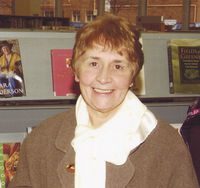 A foot massage is a very intimate experience. It sometimes has sexual connotations, though not always. In some cultures, such as Timorese and some Middle Eastern cultures, children massage the feet of their parents and grandparents as a matter of course. It is rare, however, in any culture at any time, for a woman to come in off the street, to weep profusely over the feet of a little known man, and to massage his feet with perfumed ointment. So what is happening in the first story in today’s gospel? What does Luke want to say about Jesus, about the woman, and about Simon the Pharisee who is hosting the dinner where all of this happens? Why does Jesus accept and even affirm such activity on the part of a woman who is identified as a sinner in the city?
A foot massage is a very intimate experience. It sometimes has sexual connotations, though not always. In some cultures, such as Timorese and some Middle Eastern cultures, children massage the feet of their parents and grandparents as a matter of course. It is rare, however, in any culture at any time, for a woman to come in off the street, to weep profusely over the feet of a little known man, and to massage his feet with perfumed ointment. So what is happening in the first story in today’s gospel? What does Luke want to say about Jesus, about the woman, and about Simon the Pharisee who is hosting the dinner where all of this happens? Why does Jesus accept and even affirm such activity on the part of a woman who is identified as a sinner in the city?
The story itself provides a number of clues to understanding. This unnamed woman demonstrates that an extraordinary measure of forgiveness sets one free to love in ways that might appear excessive. Unlike Simon, the host, she has already recognised that Jesus is the prophet of God. Simon has little love in his heart: he has not yet experienced the need for forgiveness and fails to recognise God’s prophet. Not only does Jesus accept the continuous outpouring of the woman’s tears as well as the touch of her hands and her hair on his feet. He actually affirms the goodness of her actions and compares them with Simon’s neglect as host.
The story of the forgiven woman gives way to the story of a group of women who take to the road with Jesus and the ‘twelve’ and contribute their resources for the sake of the mission. These courageous Galilean women have known the healing power of God. The reference to the number seven suggests that Mary of Magdala has been perfectly healed. She becomes the lead figure in this circle of prophetic women. Two other women are named. Joanna is identified as the wife of Herod’s steward, Chuza. She is no stranger to business affairs. Susanna is not otherwise identified: maybe she is known to Luke’s community and requires no further identification. The subsequent narrative indicates that the women continue in the company of Jesus all the way to Jerusalem, that they witness his death and burial and bring the message of the resurrection to the ‘apostles’ who refuse to accept their word. They form part of the assembly in the upper room with Mary the mother of Jesus and the rest of the community who pray in expectation of the coming of God’s Spirit.